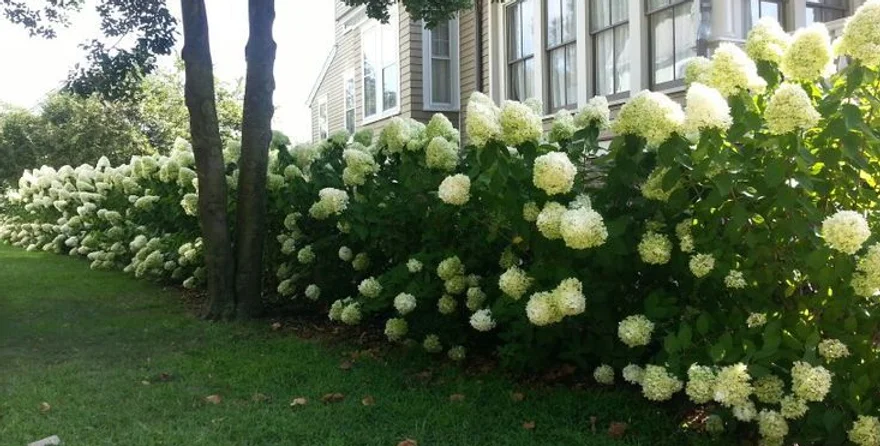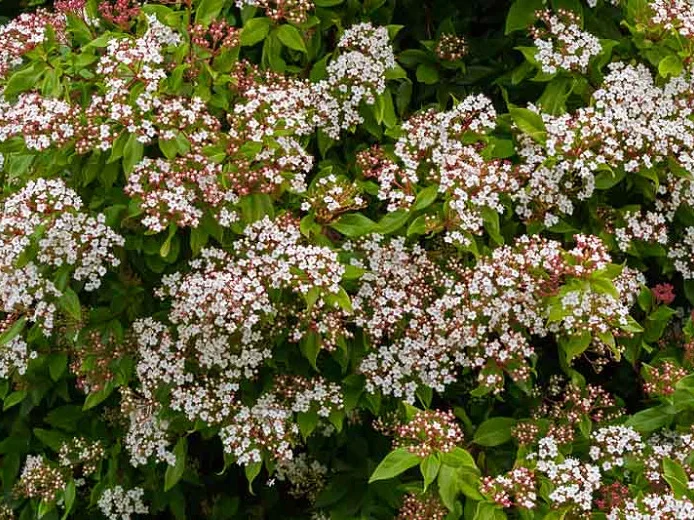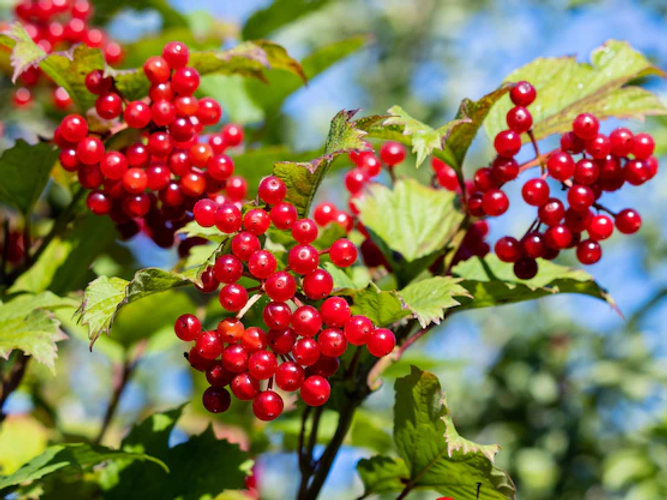Vibernum Shrubs
Viburnums are a group of large-flowering shrubs, with some varieties reaching up to 6 metres tall with both evergreen and deciduous varieties. Many have either white or pink blooms in early spring, are commonly referred to as cranberry bush, and are often used as ornamental fixtures in the home landscape. With eye-catching foliage, attractive and fragrant flowers, showy berries, and numerous varieties to choose from, Viburnum makes an exceptional addition to nearly any landscape.

Viburnum Shrub Varieties
There are several different types of Viburnums. One of the more well-known species is the Snowball Viburnum (V. opulus) with beautiful, white, snowball-shaped blooms. Notable Viburnum types that are popular for their enchanting fragrance include the Asian varieties, Cayuga and Burkwood. There are also Viburnum shrubs that are commonly grown for their fall foliage or berries. Among the best foliage shrubs are Arrowwood and Linden arrowwood, both producing attractive purplish red leaves. Vibernum varieties with interesting berry color include those that change as they ripen from green to pink, yellow, or red to blue or black such as the Wayfaring tree and Blackhaw Viburnums which turn from red to black.


Vibernum Origin
While Viburnums they also grow well in Australia’s temperate regions they are actually mostly native to Europe, America and North Asia. There are over 150 species and growing one of them will add interest and colour to your garden most of the year. One of the most common viburnums, Laurustinus or Viburnum tinus, is a tough, evergreen plant which originated in the Mediterranean and once established, can stand up to anything.
Planting and Care of Vibernum
When planting Viburnum shrubs, pay attention to the individual needs of the particular species. Most viburnums prefer full sun but many will also tolerate partial shade. While not particularly picky about their growing conditions, they generally prefer fertile, well-draining soil. The best time to plant Viburnum is in Spring or Autumn. Your hole should be dug as deep as the root ball but at least two to three times wider. Backfill with some of the soil and then add water to the planting hole before filling with the remaining dirt. When planting Vibernum shrubs as a hedge, space them anywhere from 1.5 – 3 metres apart, depending on their size at maturity and their use in the landscape.
When it comes to viburnum care, water shrubs during dry periods and add mulch to retain moisture. Applying slow-release fertilizer to Viburnums can also help support healthy plant growth but often this isn’t required. Viburnum will need to be pruned at least once, ideally in Spring as part of your plant care to keep the hedge in shape. When pruning also look to remove any dead, diseased or broken branches to maintain the plants health. Depending on the growth of your plant you may also want to prune again in Autumn to keep your hedge looking nice and sharp.
Common Problems
Armillaria root rot (also known as shoestring root rot or mushroom root rot) is a fungus that affects plant roots, which can lead to death. Symptoms of Armillaria root rot include leaves and stems appearing yellow and leaves may fall. The roots of Viburnum will eventually get sicker and the whole process up to death can take many years. As the symptoms of armillaria root rot are like that of other stresses like poor care and lack of water, it is often extremely difficult to determine if Armillaria root rot is the underlying cause.
The most common diseases of Viburnums are fungal diseases of the leaves. The 3 fungal diseases that affect viburnums are:
- Downy Mildew
- Symptoms: Spotted areas on leaves which die in Spring
- Prevention: Keep leaves as dry as possible to avoid downy mildew developing.
- Fungal Leaf Spots
- Symptoms: The leaves develop small spots that become irregular red-brown to grey-brown spots. These typically occur in wet or humid warmer monthw
- Prevention: Keep leaves as dry as possible to prevent the development of fungal leaf spots.
- Powdery Mildew:
- Symptoms: White dusty growth appears on the surface of leaves.
- Treatment: Apply a fungicide or horticultural oil.
Botryosphaeria canker affects Viburnum and is characterised by wilted or dead leaves. The fungus bears fruiting bodies that show on the branches and bark as dark brown or black bumps. There is currently no treatment available, but you can prune off the affected parts with clean pruners, and ensure you clean them thoroughly after pruning as well.
